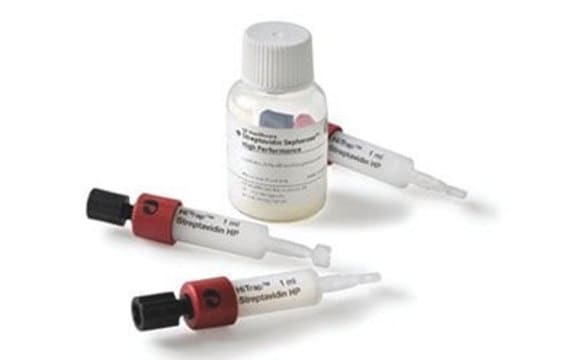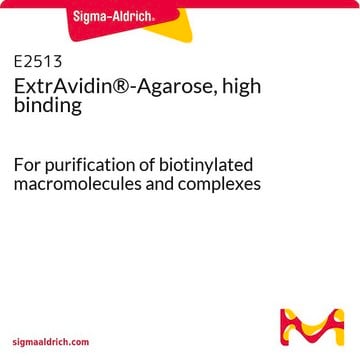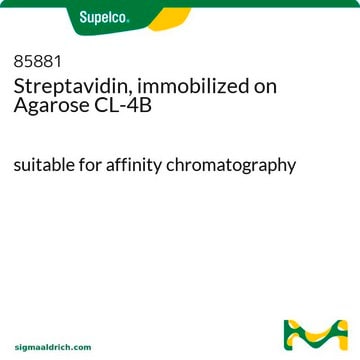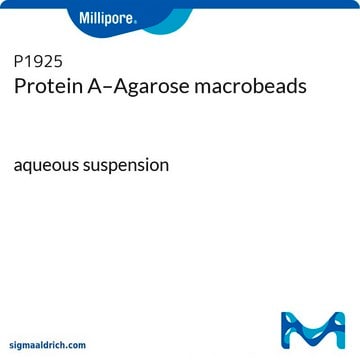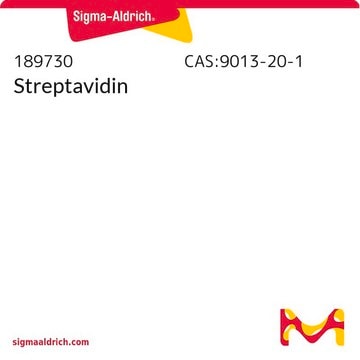A9207
Avidin−Agarose from egg white
aqueous glycerol suspension
Synonym(s):
Avidin agarose
About This Item
Recommended Products
biological source
egg white
conjugate
agarose conjugate
form
aqueous glycerol suspension
matrix
cross-linked 6% beaded agarose
matrix activation
epichlorohydrin
matrix attachment
amino
matrix spacer
15 atoms
storage temp.
−20°C
General description
Application
- in the precipitation of biotin tagged protein by pull down assay in neuroblastoma cell line (SH-SY5Y )
- in the purification of Lewis(x) sugar binding proteins from Schistosoma mansoni
- in avidin bead assay for purification of labelled biotin
- for capture of glycoproteins from murine cornea samples
Biochem/physiol Actions
Unit Definition
Physical form
Storage Class Code
10 - Combustible liquids
WGK
WGK 3
Flash Point(F)
Not applicable
Flash Point(C)
Not applicable
Certificates of Analysis (COA)
Search for Certificates of Analysis (COA) by entering the products Lot/Batch Number. Lot and Batch Numbers can be found on a product’s label following the words ‘Lot’ or ‘Batch’.
Already Own This Product?
Find documentation for the products that you have recently purchased in the Document Library.
Customers Also Viewed
Related Content
Investigate in vitro protein-protein interactions with pull-down assays, utilizing affinity, GST pull-down, TAP, and co-immunoprecipitation methods.
Investigate in vitro protein-protein interactions with pull-down assays, utilizing affinity, GST pull-down, TAP, and co-immunoprecipitation methods.
Investigate in vitro protein-protein interactions with pull-down assays, utilizing affinity, GST pull-down, TAP, and co-immunoprecipitation methods.
Investigate in vitro protein-protein interactions with pull-down assays, utilizing affinity, GST pull-down, TAP, and co-immunoprecipitation methods.
Our team of scientists has experience in all areas of research including Life Science, Material Science, Chemical Synthesis, Chromatography, Analytical and many others.
Contact Technical Service


